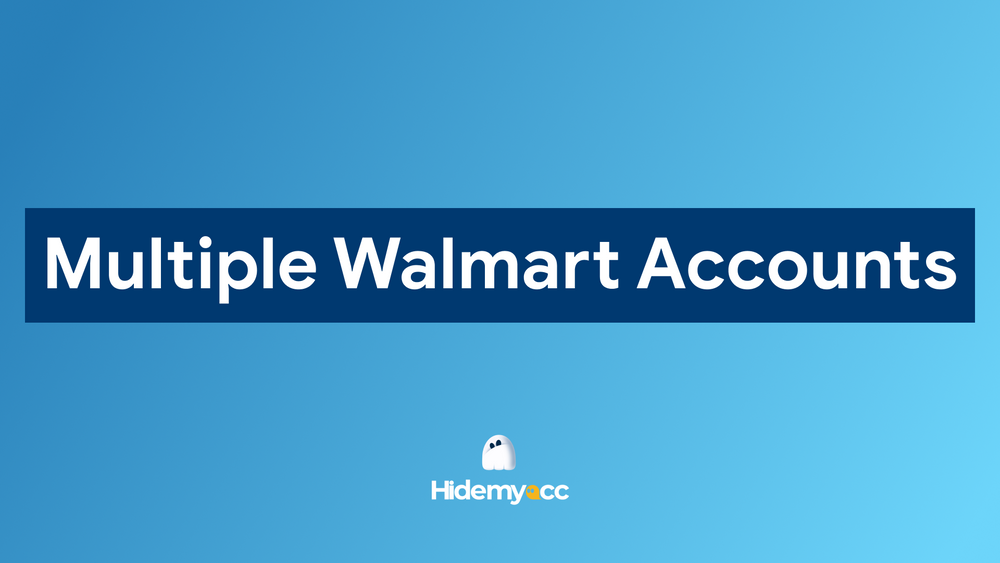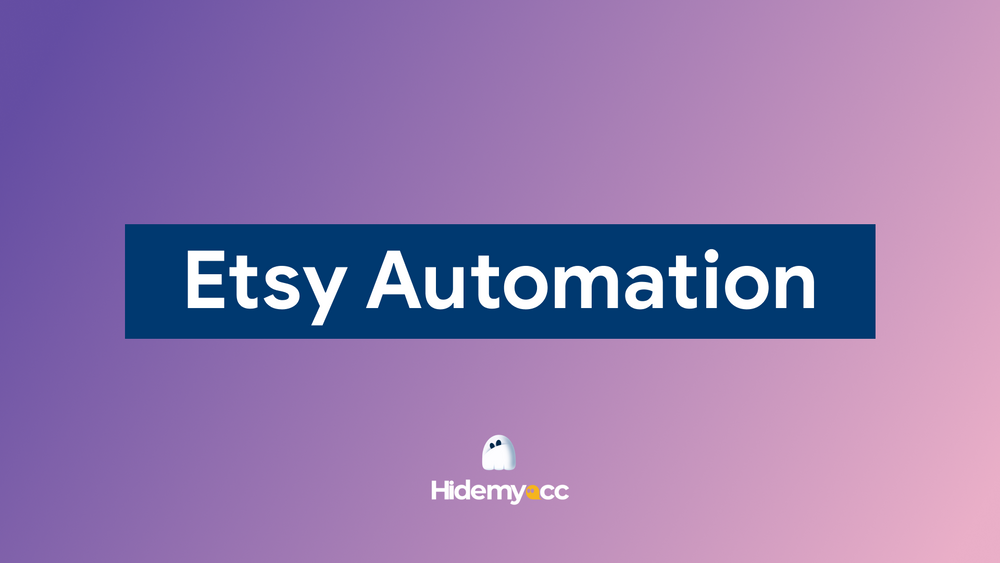Managing Shopify multiple stores is a smart strategy for businesses that want to reach different markets, serve unique customer groups, and grow revenue without mixing everything under one storefront. Instead of squeezing every product and audience into a single site, multiple stores help you keep branding and operations clear. In this guide, Hidemyacc will walk you through when it makes sense to expand, how to organize everything smoothly, and which tools make running multiple Shopify stores safe and profitable.
1. Can you have multiple Shopify stores?
Yes, you can absolutely have multiple Shopify stores under your business, and many sellers do it to expand wisely. Shopify doesn’t limit how many stores you can create, but each one needs its own subscription and setup. Running shopify multiple stores lets you tailor products, pricing, languages, and marketing for each audience or region. It’s a flexible way to manage different brands, test new markets, or split retail and wholesale sales without mixing everything in one backend. Just remember, each store runs independently, so plan time and budget for managing them all smoothly.
2. Reasons to run Shopify multiple stores and when you shouldn’t
Sometimes opening more than one store makes perfect sense, but it’s not always the right move for every business.
2.1. When to run Shopify multiple stores
Having shopify multiple stores works well in situations like these:
- You want to target customers in different countries with local currency, shipping, and tax settings.
- Your business runs separate brands or very different product categories that need unique storefronts.
- You plan to test a new niche or audience without affecting your main store’s branding.
Setting up more than one store in these cases can make marketing clearer and help you scale more smoothly.
2.2. When you might not need Shopify multiple stores
There are times when one well-optimized store is all you really need:
- Your product range is too small to justify the cost and effort of extra sites.
- Your team or budget is limited, making it hard to manage content, ads, and inventory for each store.
- You can solve your need with apps that handle multi-language, currency, or region-specific settings.
In these situations, focusing your energy on growing one store usually delivers better results than spreading resources too thin.
3. How to set up multiple Shopify stores step by step?
Setting up Shopify multiple stores is much easier if you plan ahead and follow a clear workflow. Here’s a practical approach that works whether you’re on a standard plan or Shopify Plus.
Step 1: Decide how many stores you need
Map out which countries, languages, or product lines each store will handle. It’s best to start small - test demand with one extra store first before adding more.
Step 2: Create your new store
To create an extra Shopify store, most sellers sign up for a new store at Shopify.com using a different email address. If you’re using Shopify Plus, you can add new stores directly from your Organization Admin under the Stores section. This helps big brands manage multiple stores and teams more easily. Each store has its own admin and billing details, so plan your accounts carefully.
Step 3: Get a domain and branding ready
Buy a domain that suits your new market and keep your logo and colors consistent where it makes sense. You can register domains directly in Shopify or link a domain from a provider like GoDaddy or Namecheap.
Step 4: Set up payments, taxes, and shipping rules
In your store settings, activate suitable payment gateways like Shopify Payments, PayPal, or cash on delivery. Adjust tax rates based on the country’s rules and connect local shipping providers to offer competitive delivery options.
Step 5: Copy products and themes if needed
If your new store sells similar items, save time by copying your existing products and collections. Apps like Matrixify (Excelify) or Store Copy help transfer product data, themes, and basic settings between stores safely.
Before launching each store, always run test orders, check checkout flows, and review shipping rates on different devices. Once live, assign clear daily tasks to your team and monitor analytics for each store separately to keep everything on track.
4. Best tools and apps to manage multiple Shopify stores easily
Running multiple Shopify stores can feel overwhelming at times, but the right tools can make day-to-day tasks much more manageable. Here are some practical options that store owners often rely on.
4.1. Dashboards to track everything in one place
When you run several stores, it helps to see all your sales, orders, and reports in one view. Shopify Plus users have access to an Organization Admin dashboard to manage stores, staff, and analytics centrally. Smaller businesses often add third-party apps like Rewind Backups to keep data safe or Lifetimely to analyze customer lifetime value and other key performance metrics.
Having a clear dashboard and a reliable backup system makes it much easier to catch issues early and keep all stores running smoothly.
4.2. Apps to sync inventory and orders
If you sell the same or similar products across multiple stores, inventory sync apps can save you a lot of manual work. They automatically adjust stock levels and update orders between stores in real time.
- Multi‑Store Sync Power: Syncs product quantities across selected stores instantly and helps prevent overselling.
- Syncio: Easy to set up and especially useful for dropshipping or working with multiple suppliers.
- Stock Sync: Lets you sync inventory from external CSV files or supplier feeds with minimal effort.
A good sync app keeps product information consistent everywhere and reduces errors that could disappoint customers.
4.3. How to manage multiple Shopify accounts safely with Hidemyacc
When sellers want to open multiple Shopify stores, they usually register each one with a different email. But handling all these accounts on the same computer can sometimes link browser data together in ways that Shopify’s security systems might notice.
One way to avoid this is to use antidetect browser Hidemyacc. It lets you create separate browser profiles so each store has its own clean environment with different cookies, fingerprints, and IP settings. This makes switching between stores on one device safer and helps reduce the chance of unexpected account issues. Many sellers find it a simple option to keep multiple stores running smoothly without extra hassle.
5. Managing inventory, orders, and customers across Shopify multiple stores
Running multiple Shopify stores means you have more stock to monitor, more orders to fulfill, and more customers to take care of. A clear daily routine helps you keep everything organized and reduces costly mistakes.
5.1. Keep stock accurate every day
Use your chosen inventory sync tool to make sure stock levels update automatically between stores. Even with automation, it’s smart to check your main product listings regularly to catch errors early and prevent overselling.
5.2. Handle orders consistently
Set up clear rules for how your team processes orders from each store, especially if you use different shipping partners or warehouses. Keeping packaging, tracking, and returns policies consistent helps build trust with customers across all your stores.
5.3. Manage customer data wisely
Decide whether you want to keep separate customer lists for each store or connect them through a CRM or email marketing platform. This makes it easier to run targeted campaigns without sending duplicate messages.
5.4. Stay on top of tasks
Create a simple checklist for daily tasks like reviewing low-stock alerts, tracking new orders, and responding to customer questions. Sharing this routine with your team keeps everyone on the same page and helps your business run smoothly, even as your store network grows.
When you have a clear process and everyone knows their role, managing inventory, orders, and customers across multiple stores becomes far less stressful.
6. How to maximize profit from Shopify multiple stores?
Once you have multiple Shopify stores up and running, the next step is to make sure each one contributes to your profit without draining resources. Here are some practical ways to keep revenue high and costs under control.
6.1. Cross-sell and upsell between stores
If your stores target different customer groups, find smart ways to promote related products across them. Offer special bundles or discounts for shoppers who buy from more than one store to boost overall order value.
6.2. Run focused ad campaigns
Give each store its own advertising plan with clear goals and a defined audience. Running separate ads helps you spend budgets wisely and match your message to what works for each market.
6.3. Track costs and profit per store
Monitor important numbers like customer acquisition cost, average order value, and repeat purchase rates for every store. Clear reports show which stores are profitable and which ones need fine-tuning.
6.4. Review your operational expenses
Multiple stores can create hidden costs, like duplicate apps or overlapping tools. Check your expenses regularly and remove anything that doesn't clearly support growth.
6.5. Expand carefully and at the right time
Opening more stores is exciting, but too many too fast can backfire. Make sure each store is running well and generating profit before adding a new one.
With thoughtful planning and careful spending, managing multiple Shopify stores can be a smart way to grow your business without spreading your team too thin.
7. Conclusion
Managing Shopify multiple stores can be a smart way to reach new customers and grow your business if you plan carefully and stay organized. Each store lets you serve different markets, test new products, and expand your brand without confusing your audience.
To run multiple stores smoothly, it helps to use trusted tools for syncing stock, tracking sales, and backing up data. Many sellers also rely on Hidemyacc to keep each store’s login and browsing environment separate, which adds an extra layer of safety when managing multiple accounts on the same device.
The keys to success are simple: set up each store properly, build clear workflows for your team, and keep a close eye on profit and costs. Start small, focus on giving customers a great shopping experience across all your stores, and expand wisely as you learn what works best. Done right, Shopify multiple stores can help take your online business to the next level.
8. FAQ
1. Can you have multiple Shopify stores?
Yes. Shopify lets you run as many stores as you want, but each one needs its own subscription and setup.2. How much does it cost to have multiple stores on Shopify?
Each store has a separate monthly plan, so your total cost depends on how many stores you have, plus extra costs for apps, domains, and team management.3. How many stores can I create in Shopify?
There’s no official limit. Many businesses start with just a few stores to keep operations manageable before scaling up.4. Can two Shopify stores share inventory?
Not automatically. You’ll need an inventory sync app to keep product quantities updated across all your stores.5. Can I use a Shopify theme on multiple stores?
Yes, you can reuse a theme, but you need to install it separately on each store. Some premium themes may have licensing rules, so always check.6. Can I transfer a Shopify theme to another store?
Yes. You can download a theme file from one store and upload it to another to keep your branding consistent.7. How do I switch between Shopify stores?
You log into each store’s admin separately. Shopify Plus users can switch easily using Organization Admin. Many sellers also use tools like Hidemyacc to manage multiple logins safely on the same device.8. Can two people run the same Shopify store?
Yes. You can add staff accounts for teammates and give them different permission levels so they can help manage orders, products, and customers securely.





